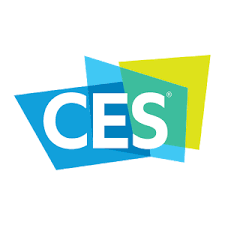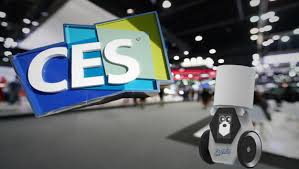 Aging in place – it’s emerged (again) during these Covid-19 times. Déjà vu all over again. But ‘aging in place’ is still a challenge and maybe a pipe dream for seniors in their late 70’s or 80’s. Consider a few issues for starters: chronic health conditions including mobility limitations, stairs, snow/ice, driving, dangerous hills for walking, cognitive issues, and social isolation. You get the idea. Then there is the cost of 24x7 home care, same as assisted living (which is $67K in Massachusetts, for example) or even Genworth’s 44-hours of home care ($53-54K annual). That may work for the most well-to-do seniors. But families are still in a position of finding and then managing the care workers, even with agency assistance. So Mom or Dad stays at home as long as feasible and even beyond – and that’s why the home care industry today is booming. And competing for the same workers as senior living firms pay their CNAs.
Aging in place – it’s emerged (again) during these Covid-19 times. Déjà vu all over again. But ‘aging in place’ is still a challenge and maybe a pipe dream for seniors in their late 70’s or 80’s. Consider a few issues for starters: chronic health conditions including mobility limitations, stairs, snow/ice, driving, dangerous hills for walking, cognitive issues, and social isolation. You get the idea. Then there is the cost of 24x7 home care, same as assisted living (which is $67K in Massachusetts, for example) or even Genworth’s 44-hours of home care ($53-54K annual). That may work for the most well-to-do seniors. But families are still in a position of finding and then managing the care workers, even with agency assistance. So Mom or Dad stays at home as long as feasible and even beyond – and that’s why the home care industry today is booming. And competing for the same workers as senior living firms pay their CNAs.
Senior living – maybe the pitch is about providing care. The irony! Forever, it seems that the senior living sales pitch has been about the variety and quality of food, the beauty of the décor, and the plentiful ‘lifestyle’ activities. This mythology persisted, even as the average age of residents rose into the mid-80’s, frailty of residents increased (note the need for help with bathing). Dementia care (note percentages with various levels of dementia), by 2019 a much-needed offering. Consider the role of the LPN nurse -- calling 911 to bring residents to the ER for all but the simplest condition. But in a recent interview, one executive noted the pitch has migrated to selling care: “Sales and marketing teams did not focus as much training on the care component, pre-pandemic, which caught many flat-footed when general inquiries into the product took a nosedive.” And now some make the case for an onsite RN, not an LPN.
Are nursing homes going to disappear? Unlikely. It’s one thing to read the appropriate coverage in the media about the horrendous mismanagement of Covid-19 patients in New York City nursing homes. But does mismanagement and fact obfuscation about death rates guarantee the industry’s long-term ‘grim future’? Even if assisted living organizations hire an RN, offer dementia care, and change their marketing strategies, some seniors will end up in in one of the 14,000+ US nursing homes. Perhaps the reasons could be the Medicare-paid post-acute rehab care, in-room wound and IV treatments, and Medicaid-reimbursed daily rate. Perhaps the assisted living staff or the senior’s family could no longer handle the older adult who may have significant care requirements. Perhaps many years in assisted living consumed family assets and an elder law attorney helped with the move to a Medicaid-eligible nursing home?
No matter where older adults live, technology capability matters. Older adults need to get and stay connected via broadband. And when another distressing survey says that 22 million seniors don’t have it, that isn’t going to work. Broadband enables signing up for vaccine appointments, finding home care, getting meals delivered, learning a skill, seeing family members, and finding a job. Since the telecom carriers don’t seem to be closing this enormous gap, it’s time that some national entity focused older adults living in their own homes gets it done. Senior living needs to get it done – for an example – see the home page featuring technology depth for Asbury Communities. Skilled nursing facilities need to work with payers to a) upgrade to broadband; b) enable families and outside organizations to connect with residents; and c) combine with healthcare services like teledentistry and permanently make telehealth available to all residents.
from Tips For Aging In Place https://www.ageinplacetech.com/blog/care-options-seniorstech-included
 Time for the Market Overview Technology for Aging 2021
Time for the Market Overview Technology for Aging 2021 What is broadband and why should seniors want it? The talk about broadband and older adults is growing louder since the start of the pandemic – which
What is broadband and why should seniors want it? The talk about broadband and older adults is growing louder since the start of the pandemic – which  Even online – it was still CES – from the silly to interesting to useful. How many of these exist? An international conference where inventions from everywhere are welcomed. Some of these offerings, as always, are odd. But some, as with yesterday’s
Even online – it was still CES – from the silly to interesting to useful. How many of these exist? An international conference where inventions from everywhere are welcomed. Some of these offerings, as always, are odd. But some, as with yesterday’s  CES 2021 – roll the press releases and turn on your computer. A long time ago, one writer published a charmingly-named CES overview of CES 2012 called
CES 2021 – roll the press releases and turn on your computer. A long time ago, one writer published a charmingly-named CES overview of CES 2012 called  It's 2021 and baby boomers turn 75. It took the combination of 71 million boomers, a pandemic emergency, and the sheer size of the aging population to transform a 2009 market niche into this 2021 market category worthy of investment-- less about products specifically designed for older adults as it is about the marketing of many existing offerings as useful to them. But this is January, 2021, in the time of Covid-19 and the time of the all digital
It's 2021 and baby boomers turn 75. It took the combination of 71 million boomers, a pandemic emergency, and the sheer size of the aging population to transform a 2009 market niche into this 2021 market category worthy of investment-- less about products specifically designed for older adults as it is about the marketing of many existing offerings as useful to them. But this is January, 2021, in the time of Covid-19 and the time of the all digital